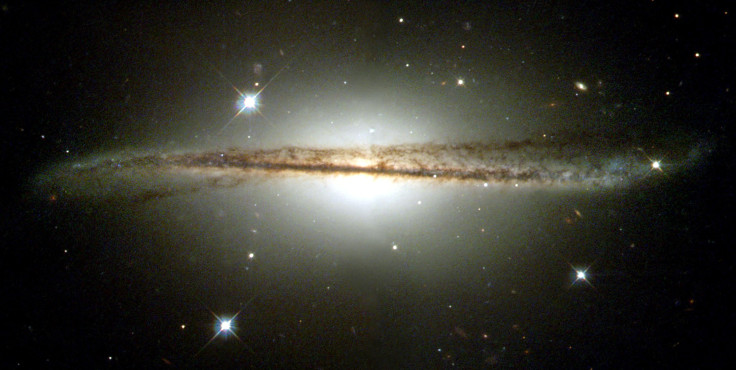Milky Way’s Neighboring Galaxy Getting Ripped Apart By Cosmic Rays, Researchers Reveal

KEY POINTS
- Researchers learned that cosmic rays are affecting the gas clouds of the Large Magellanic Cloud
- Cosmic rays are high-energy particles produced by supernova events
- The LMC is stable for now due to its interaction with Milky Way
A team of researchers learned that Milky Way’s neighboring satellite galaxy is getting ripped apart by cosmic rays. According to the researchers, the highly destructive cosmic rays come from supernova events.
Milky Way is surrounded by dozens of smaller galaxies. One of these is the Large Magellanic Cloud (LMC), which is expected to collide with Milky Way 2.5 billion years from now.
As the LMC orbits other smaller galaxies, the gravitational interaction causes new stars to form. These newly formed stars often live a fast life. As they quickly burn through their nuclear fuel, they trigger stellar explosions in the form of supernovae.
These explosions produce cosmic rays, which are composed of tiny highly-charged particles that zip through space at the speed of light. Although cosmic rays are generally not harmful due to the size of their particles, they can rip through galaxies due to their kinetic energy.
According to the authors of a recent study, which was submitted for publication to the Astrophysical Journal, getting hit by large bursts of cosmic rays can tear apart and push away the gas clouds of galaxies due to the intense heat generated by the particles. The researchers made this discovery after running simulations involving the LMC.
Although the researchers learned that the cosmic rays are driving the LMC’s gas clouds away, something is still keeping them within the galaxy. Further observations on the galaxy revealed that the LMC’s interactions with Milky seem to be keeping the former stable for now.
According to the researchers, since the LMC is currently spiraling towards Milky Way, it is going through the halo of gas surrounding the latter. The researchers noted that the pressure exerted by the gas halo on the LMC seems to be preventing the satellite galaxy’s clouds from escaping completely.
“We find that, even for our largest outburst, the mass contribution to the Stream is still quite small, as much of the LMC halo gas is shielded on the LMC's far-side due to the LMC's primarily face-on infall through the Milky Way halo,” the researchers wrote in the study.
Although the LMC is stable for now, it is not yet clear how long the Milky Way’s gas halo will protect the satellite galaxy’s gas clouds from being totally ripped apart by the cosmic rays.
© Copyright IBTimes 2025. All rights reserved.





















